What is the water consumption of an automatic washing machine?
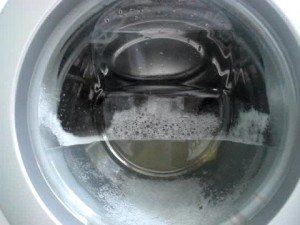 Smart people, when purchasing a new automatic washing machine, have long paid attention to such a criterion as the average water consumption per wash. We need to think about this, since currently we wash most of our clothes automatically, wasting hundreds of liters of water per month. It is estimated that on average a washing machine wastes up to ¼ of all the water consumed by a family of three. In this regard, you should think about methods of saving water when washing, and perhaps about choosing an economical model of washing machine.
Smart people, when purchasing a new automatic washing machine, have long paid attention to such a criterion as the average water consumption per wash. We need to think about this, since currently we wash most of our clothes automatically, wasting hundreds of liters of water per month. It is estimated that on average a washing machine wastes up to ¼ of all the water consumed by a family of three. In this regard, you should think about methods of saving water when washing, and perhaps about choosing an economical model of washing machine.
What determines the amount of water consumed by a machine?
Automatic washing machines are valuable because they save the housewife’s time and effort by washing, rinsing and spinning large volumes of laundry without her participation. These freed up hours can be spent on activities with your child or on yourself, but the joy is somewhat darkened when utility bills arrive at the end of the month. Saving energy turns into unnecessary financial expenses.
It should be understood that any automatic washing machine will consume a fairly large amount of water and it is difficult to do anything about it. But in some cases, for some reason, the machine consumes a lot of water, straining the family budget. Let’s find out what determines the volume of water consumed by a washing machine.
- From the washing machine model. New models of washing machines have programs and implemented developments that allow you to save some water. When buying a new machine, pay attention to these nuances.
- From loading laundry.Here we mean two components at once: the maximum possible load of laundry into the drum and the washing method. If you wash the maximum amount of laundry each time, the average water consumption will be less (except for the most modern washing machines) than if you wash more often, but in small quantities.
- From the presence or absence of a malfunction. A faulty washing machine or improper connection may increase water consumption. For example, if the inlet valve malfunctions, the machine will constantly pump water into the tank, even when it is turned off.
- From user-selectable washing programs. For each washing program, the manufacturer has its own algorithm, including the volume of water pumped into the tank. If you always choose “water-intensive” washing programs, then your average water consumption will increase.
- From user requirements to the quality of washing and rinsing. Some housewives, often taking things out of the drum, are dissatisfied with how the machine washed or rinsed them. This may have happened due to an incorrectly selected washing program or due to persistent stains that the owner did not wash by hand first. There are many reasons, but the result is the same: needing to wash or rinse again means wasting more water.
Important! Typically, the faster a program completes a wash cycle, the more economical the wash will be in terms of water consumption. From this point of view, the “quick wash” program or its analogues is considered the most economical.
The average water consumption of a washing machine is usually indicated by the manufacturer in the product data sheet. If you compare several models of cars from different manufacturers, it turns out that these indicators are different for everyone, but the average value can still be calculated.Experts, having studied several dozen models of washing machines, came to the conclusion that the minimum volume of water spent on 1 wash is 38 liters, and the maximum volume is about 80 liters.
We do some simple calculations and come to the conclusion that the average volume of water consumed per wash in an automatic washing machine today is about 59 liters. It is clear that if your automatic machine spends much more than this value, it means either you are doing something wrong, or the equipment is faulty. In any case, this is worth paying special attention to.
Which cars are the most economical?
Now we will provide information for those who are planning to purchase a new washing machine. Let's talk about the most economical modern washing machines, their models and manufacturers. We present to your attention an overview of the models of the most economical washing machines that can be purchased currently. This review was made thanks to information collected by specialists in sales and repair of washing machines.
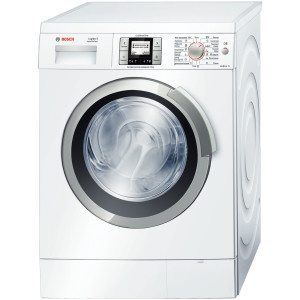 Bosch WLG20265OE. A good, reliable model of an automatic washing machine, which appeared thanks to advanced German technologies. A rather ascetic design and a simple control panel hint at the low price of this equipment. However, the technologies used in this machine by German engineers make it possible to actually save water.
Bosch WLG20265OE. A good, reliable model of an automatic washing machine, which appeared thanks to advanced German technologies. A rather ascetic design and a simple control panel hint at the low price of this equipment. However, the technologies used in this machine by German engineers make it possible to actually save water.
- Firstly, The average water consumption of this automatic machine is about 40 liters and this is when using various washing programs and when loading the drum 5 kg.
- Secondly, water consumption can be further reduced if you select a special program - “super quick wash”. With this washing mode, the machine will spend about 36 liters of water - this is almost a record.At the same time, the quality of washing does not suffer at all.
Samsung WF60F1R2F2W. An excellent inexpensive automatic washing machine from a well-known Korean manufacturer. This washing machine has a lot of advantages, one of which can be considered cost-effectiveness. And, indeed, with a maximum drum load of 6 kg, the machine consumes an average of 39 liters of water per wash.
As is the case with German technology, this model has a “super-fast wash” mode; when used, the water consumption decreases slightly and is approximately 35 liters per wash.
Note! Korean washing machines save not only water, but also electricity. The above washing machine model belongs to energy consumption class “A”.
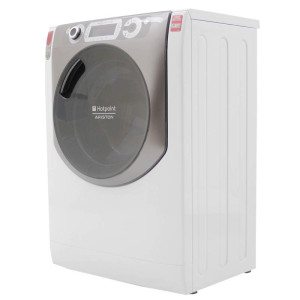 Hotpoint/Ariston AQS1D29. A slightly more expensive, but at the same time very functional and reliable model of a washing machine from the famous Italian manufacturer. The average water consumption of this machine is 40 liters, however, it can be reduced not only by the “accelerated wash” mode, but also by the automatic laundry weighing system.
Hotpoint/Ariston AQS1D29. A slightly more expensive, but at the same time very functional and reliable model of a washing machine from the famous Italian manufacturer. The average water consumption of this machine is 40 liters, however, it can be reduced not only by the “accelerated wash” mode, but also by the automatic laundry weighing system.
With all this car Hotpoint/Ariston AQS1D29, during the washing process using the “accelerated wash” program, spends a record 34 liters of water per wash cycle. Agree, excellent result!
Siemens WS 10G240 OE. Another “masterpiece” of German mechanical engineering is the Siemens WS series washing machine. A relatively inexpensive and economical model, consuming an average of 40 liters of water per wash cycle. By washing clothes using the “quick wash” program, you can further reduce water consumption to 37 liters.
Under normal conditions, unless there is a malfunction, any of the above machines, even with record low water consumption, washes clothes perfectly and the fact of saving water does not in any way affect the quality of the wash. It’s another matter if the user, in pursuit of savings, chooses unjustified washing modes for a certain type of laundry or loads more laundry into the drum than the maximum drum load indicators allow.
When preparing to wash your items, read the instructions that came with your washing machine. Act in strict accordance with the recommendations of the instructions, and then the quality of washing and water consumption of the washing machine will satisfy you.
How to reduce water consumption when washing?
In order to solve the problem of excessive water consumption by a washing machine, you first need to identify it. In other words, you need to find out whether your machine really spends too much water or if it just seems so to you. What should be done?
- Take a look at the passport of your washing machine and see how much water your machine should draw and consume in 1 wash cycle.
- Select the most economical washing program that your machine has in its arsenal (usually “quick wash”, “accelerated wash”, “quick 30”, etc.) and record the amount of water consumed using the water meter.
- Select the most water-intensive washing program (usually programs associated with washing cotton or bulky items) and also track how much water was used using the water meter.
- Based on the resulting indicators, calculate how much water your washing machine uses on average.
Note! When you measure the water consumption of the washing machine, do not forget to turn off all the taps in the house, as well as the toilet tank, for the duration of the wash, otherwise the calculations will be incorrect.
If, as a result of the measurements and calculations, you received a value close to what the manufacturer indicates in the passport (+- 15 liters), this is normal. This means that everything is fine with your washing machine and there is no need to take any measures. But if the actual water consumption is much higher, say 30 or even 50 liters more than the value declared by the manufacturer, urgent measures need to be taken. If you do not violate the instructions for using the washing machine, most likely there is a malfunction and you need to contact a specialist.
For our part, we advise you not to climb into the car body yourself. Troubleshooting on your own may well be fatal for your washing machine. It is better not to skimp on a specialist, but later save on water when the machine malfunction is professionally repaired. If you decide to independently search for and correct the defect, read about how to properly disassemble a washing machine.
To summarize, we note that everyone who uses an automatic washing machine needs to know how much water it consumes. This is necessary not only to save on utility bills. Increased water consumption is an indirect sign of a serious malfunction that can lead to the failure of the home assistant.
Interesting:
Reader comments
- Share your opinion - leave a comment
Categories
Washing machine repair


For buyers

For users

Dishwasher



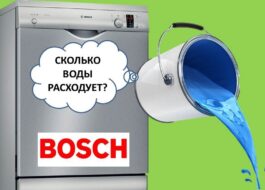
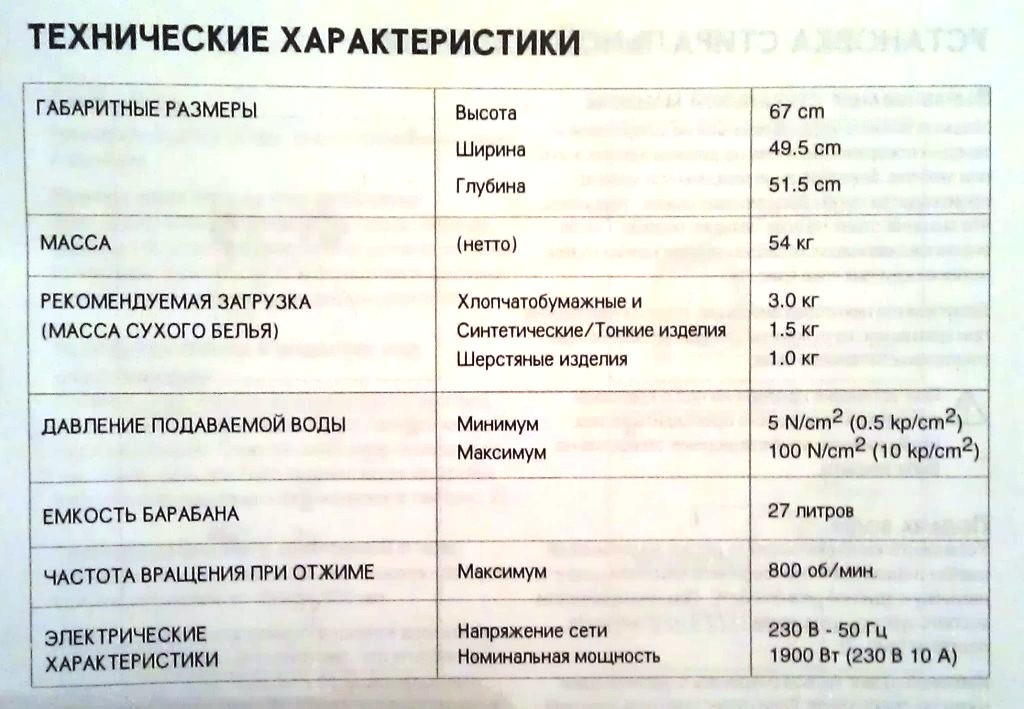












Add a comment